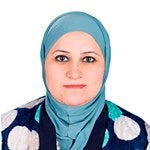 Razan was a vibrant, happy girl living in the town of Rafah in the Gaza strip when she was diagnosed with a
bone marrow illness not long ago, in November 2014. She needed a bone marrow transplant, a medical procedure available only in Israeli hospitals. Her referral, though urgent, was delayed for 20 days. First, she was directed to the wrong hospital for marrow transplants, and then she was denied financial coverage. The Israeli authorities failed to respond immediately to her parents’ application for an emergency permit to allow her into Israel through the (otherwise impenetrable) Erez crossing.
Razan was a vibrant, happy girl living in the town of Rafah in the Gaza strip when she was diagnosed with a
bone marrow illness not long ago, in November 2014. She needed a bone marrow transplant, a medical procedure available only in Israeli hospitals. Her referral, though urgent, was delayed for 20 days. First, she was directed to the wrong hospital for marrow transplants, and then she was denied financial coverage. The Israeli authorities failed to respond immediately to her parents’ application for an emergency permit to allow her into Israel through the (otherwise impenetrable) Erez crossing.
Razan died on 25 November. She was just 11 years-old.
Razan’s story is far too common. In 2013, more than 17,000 Palestinians from Gaza were referred to health facilities in Israel, Egypt, Jordan, and East Jerusalem. Needing travel permits issued by Israel or Egypt, most either faced long delays or were denied care altogether. Again, some died as a result.
Apart from its tragic consequences, this referral system is itself bureaucratic and unfair, placing an unsustainable financial burden on the Palestinian Authority (PA). Between 2000 and 2013, such expenditure on referrals increased from US$8 million to US$144 million, becoming the equivalent of 40% of the PA’s health spending outside of salaries. (This has also led to unpaid medical bills amounting to more than US$30 million.)
So why is Gaza referring so many Palestinian patients to hospitals outside of it, including hospitals in Israel? Prior to the devastating war in Gaza in the summer of 2014, its public health system already functioned in an environment of protracted conflict. More complex treatments were seldom available; facilities often lacked essential medicines and adequate medical staff; and prolonged power blackouts and the lack of generator fuel compromised health services.
The recent war has greatly exacerbated these problems, with World Health Organization estimating that about 58% of all Gaza’s health facilities were damaged during it. Overwhelmed by influxes of new patients, facilities were unable to keep on top of sterilization and cleaning, resulting in an increase in infection, as well as outbreaks of communicable disease. Faced with more pressing needs, most public health initiatives—particularly those related to prevention—have stalled, and in many cases, key health indicators are slipping backwards, jeopardizing the long-term health of Gaza’s population.
During her trip to Gaza late last year, Inger Andersen, the Middle East and North Africa’s former Vice President, saw the extent of the destruction to Gaza’s health sector first-hand. She believed the World Bank Group could “play a transformational role in the Palestinian territories, as it should in most fragile and conflict affected settings”.
The World Bank has been working together with international and bilateral donor partners, including WHO, USAID, NORAD, and DFID, to support the Palestinian Authority’s initiatives. These initiatives include securing continuity in health care, improving the quality of health services, defining a roadmap to achieve universal health coverage, and developing a strong framework for outside medical referrals.
A new World Bank health project was launched in late February 2015 to help the Ministry of Health in the West Bank and Gaza move toward these goals. While the needs are many, these efforts are a small step forward. We hope this coordinated assistance will contribute toward increasing donors’ confidence in the health sector. Now more than ever, it seems important to help the PA put resilient health systems in place so that tragic cases of delaying referrals like Razan’s do not continue to happen.




Join the Conversation